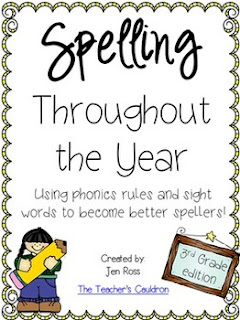What's the difference between these common literacy terms?
3:00 PM
Happy days are here again! Thanks for visiting the blog today as I answer some questions that have baffled me for a while. I always like to sound knowledgeable when someone asks me questions like these! I've done the legwork for us and learned a lot in the process!
Story Structure vs. Story Elements
Last week I was reviewing our Atlas Curriculum Map. On the top, the listed objective for the next few weeks was story structure while the essential questions were about story elements. Here's the difference:
Story structure includes a series of events or the plot. Authors chose to arrange these events in different ways. Story structure is how an author "builds" the story. In my class, we start the year learning about sequence so that is where I begin with story structure. Check out this anchor chart which highlights a variety of story structures and was made by Gay Miller:
Story elements are the individual parts that make up the story. These parts include character, setting, problem and solution. I LOVE, love, love this anchor chart from Teaching with a Mountain View:
Sight Words vs. High Frequency Words
According to the web site, We Are Teachers:
High-frequency words are the most commonly used words in printed text and over 50 percent of all text is composed of them.( Reading A to Z)
When my district decided to eliminate Spelling, I purchased this product on Teachers Pay Teachers:
This product was one of the best investments I have ever made. I love the word lists and the emphasis on "non-negotiable" or high frequency words which help the kids become better readers.
Guided Reading vs. Shared Reading
In Guided Reading, a teacher works with small groups of students who are at similar reading levels and/or have similar instructional needs.
In Shared Reading or interactive read alouds, the teacher models specific reading strategies while reading a book out loud. The teacher can use think alouds or guiding questions to demonstrate different reading strategies.
Do you have any other questions that you'd like to ask? Please let me know, and I can answer them in a future blog post!

As always, thank you so much for visiting our blog. Happy Columbus or Indigenous People Day!
Story Structure vs. Story Elements
Last week I was reviewing our Atlas Curriculum Map. On the top, the listed objective for the next few weeks was story structure while the essential questions were about story elements. Here's the difference:
Story structure includes a series of events or the plot. Authors chose to arrange these events in different ways. Story structure is how an author "builds" the story. In my class, we start the year learning about sequence so that is where I begin with story structure. Check out this anchor chart which highlights a variety of story structures and was made by Gay Miller:
Story elements are the individual parts that make up the story. These parts include character, setting, problem and solution. I LOVE, love, love this anchor chart from Teaching with a Mountain View:
Sight Words vs. High Frequency Words
According to the web site, We Are Teachers:
High-frequency words are the most commonly used words in printed text and over 50 percent of all text is composed of them.( Reading A to Z)
When my district decided to eliminate Spelling, I purchased this product on Teachers Pay Teachers:
This product was one of the best investments I have ever made. I love the word lists and the emphasis on "non-negotiable" or high frequency words which help the kids become better readers.
Guided Reading vs. Shared Reading
In Guided Reading, a teacher works with small groups of students who are at similar reading levels and/or have similar instructional needs.
In Shared Reading or interactive read alouds, the teacher models specific reading strategies while reading a book out loud. The teacher can use think alouds or guiding questions to demonstrate different reading strategies.
Do you have any other questions that you'd like to ask? Please let me know, and I can answer them in a future blog post!

As always, thank you so much for visiting our blog. Happy Columbus or Indigenous People Day!
by Susan K.














0 comments